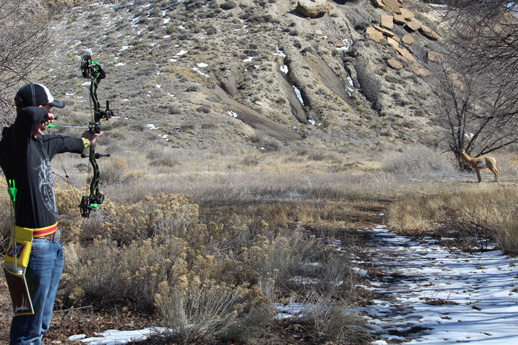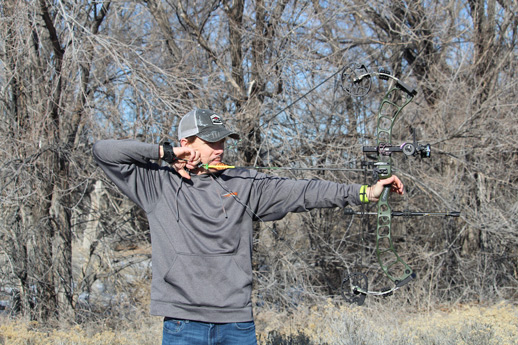
It’s All About Accuracy
Jace Bauserman
Prime Archery Article
Accuracy. It’s a word that gets tossed around the stick-and-string world a lot. Rightly so, as the perfect delivery of a projectile is the goal. However, few archers really take the time to explore bow accuracy before making a buying decision. Let me elaborate.
Today’s bow designs are great. I shoot piles of new flagships every year, and I honestly don’t think there is a bad bow out there. However, it’s really difficult to judge a bow’s true accuracy when shooting that bow at a pro shop at a distance of 20 yards. Most bows are going to perform well at this distance. The question is, how will that bow perform when shot at distances between 60 and 100 yards? Not planning to shoot that far? That’s fine. I live out West where the air spanning between my target and me is often vast, and my average bow shot is 34 yards. What I know to be true is that when I practice at distances between 60 and 100 yards, my close-range kill percentage skyrockets. And for those times when a distant shot is required, I’m prepared to make a quick, efficient kill.
Got your attention? Thinking about stretching the yardage a little in 2019? Good. I highly recommend that you do. So, back to the whole bow-buying thing. It’s March, and temps are warming. Find a reputable shop that has an outdoor range. Any shop worth its salt is going to let you stretch the legs on a pricey rig in order to help you make an informed buying decision. If you can, send some arrows downrange from longer distances and see if that bow you loved in the shop gives you the same goosebumps out on the range.
Built To Deliver
Prime’s new Logic CT series was built with accuracy at its forefront. You can easily read all about Prime’s many accuracy-enhancing technologies elsewhere on this website, so I’ll skip listing those here. This piece is meant to tell you about my accuracy findings with, specifically, the Logic CT5.
This bow holds like a rock at full draw. It’s not top-heavy and it doesn’t tend to easily tip to the right or left. The long, stiff riser marries with the wide limb pockets to provide a balanced feel that you’ll fully appreciate. In addition, the grip is a direct-to-riser grip. Much like a competition grip, it is thin, perfectly angled and flat-backed. This type of grip prevents the shooter from wanting to place too much up, down, left or right pressure on the grip. Too much pressure in a specific area equals torque. Torque kills long-distance accuracy. This grip melts into the palm-swell area, allowing natural grip pressure to be spread across the entire surface of the grip.

Prime has never been about busting radar screens, and while the CT5 is by no means slow (my Easton 5MM Axis, propelled from a CT5 set at 70 pounds of draw weight and draw length of 29 inches, hit 287 fps), the Parallel TRM Cams aren’t trying to pull your bow arm through the riser. It’s hard to relax and let your pin float on a downrange object when a pair of fiery cams are wanting to go. The Parallel TRM Cams sit like a trained Labrador, allowing you to relax and let your pin float while you pull through your release.
At the shot, the arrow is just gone. The bow pops forward into a loose grip. Noise is nil. The location of the bow’s grip (center of the riser) creates a natural follow-through, and the more you see arrows impact foam vitals, the more your confidence grows.
This is the type of bow that makes you feel like Superman or Superwoman. The more confidence you have, the more accurate you become. It’s easy to start stepping back in distance when the bow you’re shooting is enhancing your accuracy.
So take a Logic CT3, CT5 or CT9 for a test drive and find the accuracy you’ve been missing.
